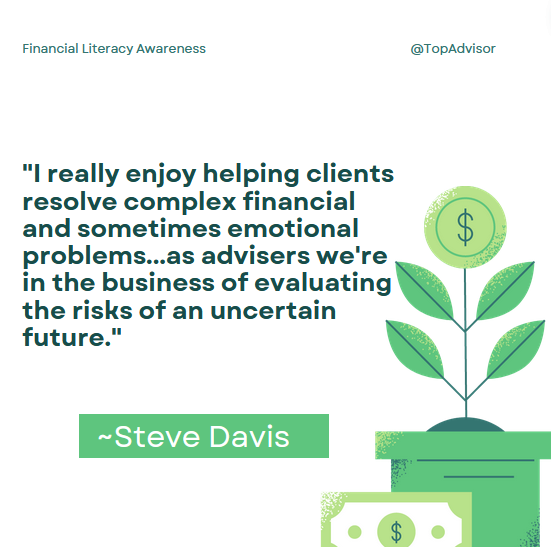Older married Americans are separating at a rate that may surprise you. Check out some of the key issues that couples splitting up after age 50 are likely to face as they plot out their future.
Bill and Melinda Gates weren’t a typical couple. But they are part of an increasingly common trend: divorce among people over the age of 50.
“Gray divorces” among older and (usually) long-married couples have been on the rise for some time. While the divorce rate is falling among younger Americans, the rate for those age 50 and older has doubled since the 1990s.
The upshot: There’s a decent chance that many people age 50 or older will experience a gray divorce themselves, or have friends or family members who go through one. So it can be helpful to recognize some of the key issues that older couples getting divorced are likely to face.
For starters, consider the potentially massive financial impact of a divorce in middle age or beyond:
- People who get separated after age 50 can reasonably expect their wealth to plummet by an astounding 77 percent.
- After a gray divorce, women experienced a 45 percent drop in their standard of living (based on income-to-needs ratio) and men experienced a 21 percent reduction.
To mitigate some of that damage, it’s important for 50-plus divorcing couples to recognize the specific financial (and other) challenges they’ll face and try to tackle them head-on. Some of the key issues to consider:
- Estate planning. Long-married couples with significant assets generally have estate plans in place that might include trusts, family limited partnerships or other complex structures. When couples separate, their goals often change or even diverge when it comes to providing for heirs and how to fund those objectives. Trusts, partnerships and other agreements should be revisited to determine whether changes need to be made (or even can be made) in terms of specific goals, tax mitigation or other factors due to the divorce.
- The home. A family home is often an important and very emotionally charged asset in a divorce. When deciding who will keep it, the ability of either person to afford costs like the mortgage payment, property taxes and maintenance need to be considered. What’s more, a long-married couple’s primary residence may have appreciated significantly in value over time. If so, a decision should be made about whether to sell the house while still married or wait until after the divorce—as the choice could generate more or less capital gains taxes for the couple, depending on the route taken.
- Rental or commercial property. On top of tax concerns, couple-owned rental or commercial property comes with decisions to make about post-divorce management and control. A divorced couple could potentially need to make multiple decisions together for years—and therefore never really “split up” fully. In some instances, it can make sense to allocate some properties completely to one spouse and allocate different properties fully to the other.
- Retirement/pension plans. The division of many types of retirement accounts will depend largely on whether the couple lives in a community property state. But understanding what benefits are available, and how they can be distributed, is a key step in planning for each person’s separate future. The benefits packages of one or both spouses need to be carefully examined in a gray divorce—particularly if relatively complex benefits are involved (such as restricted stock, stock options, phantom stock and so on) and if the accounts hold large sums.
- A family-owned business. Issues around who keeps the company (or how co-ownership is determined) and the different roles that each will have under the new arrangement can create tension that is both uncomfortable and potentially harmful to the financial health of the business itself. Clients and suppliers can jump ship if they worry about the firm’s longevity—even if everything is just fine below the surface tension.
If the couple decides to sell the company in part or entirely, appraisals will have to be done and—the sticky part—valuations agreed on by both parties.
- Health insurance and life insurance. With people living longer than in the past, there may very well be a rising need for medical procedures and other health care spending during our golden years that require reasonably good health insurance before Medicare coverage is available. If one spouse loses coverage due to the divorce, options such as COBRA and ACA-based plans may need to be considered and evaluated to bridge gaps in coverage. Providing money to maintain a suitable level of coverage may be part of the divorce negotiations.
Similarly, life insurance policies may need to be disentangled or canceled. That said, buying new policies at older ages can become expensive fast.
- Cognitive factors. Existing or potential (based on family history) cognitive impairments should be considered when coming up with the terms of a gray divorce—and guardrails (such as conservatorships) should be discussed if necessary.
Moving Forward
The rules and regulations in terms of what happens to various types of property and assets in a gray divorce will depend on numerous factors—including the state in which a couple gets divorced. That’s why it’s imperative for couples who are 50-plus and considering separating to consult with trusted professionals who understand both their specific financial situations and the laws governing their possible divorce.
With luck, a clear-eyed look at what a gray divorce may mean to a couple’s future could prompt them to keep trying to work things out. If not, it’s good to have a plan in place to navigate the intricacies of a truly tough process.
ACKNOWLEDGMENT: This article was published by the VFO Inner Circle, a global financial concierge group working with affluent individuals and families and is distributed with its permission. Copyright 2023 by AES Nation, LLC.
This report is intended to be used for educational purposes only and does not constitute a solicitation to purchase any security or advisory services. Past performance is no guarantee of future results. An investment in any security involves significant risks and any investment may lose value. Refer to all risk disclosures related to each security product carefully before investing. Securities offered through Safe Harbor Asset Management, Inc. Stephen K. Davis is a registered representative of Safe Harbor Asset Management, Inc. Stephen K. Davis and Safe Harbor Asset Management, Inc. are not affiliated with AES Nation, LLC. AES Nation, LLC is the creator and publisher of the VFO Inner Circle Flash Report.








0 comments